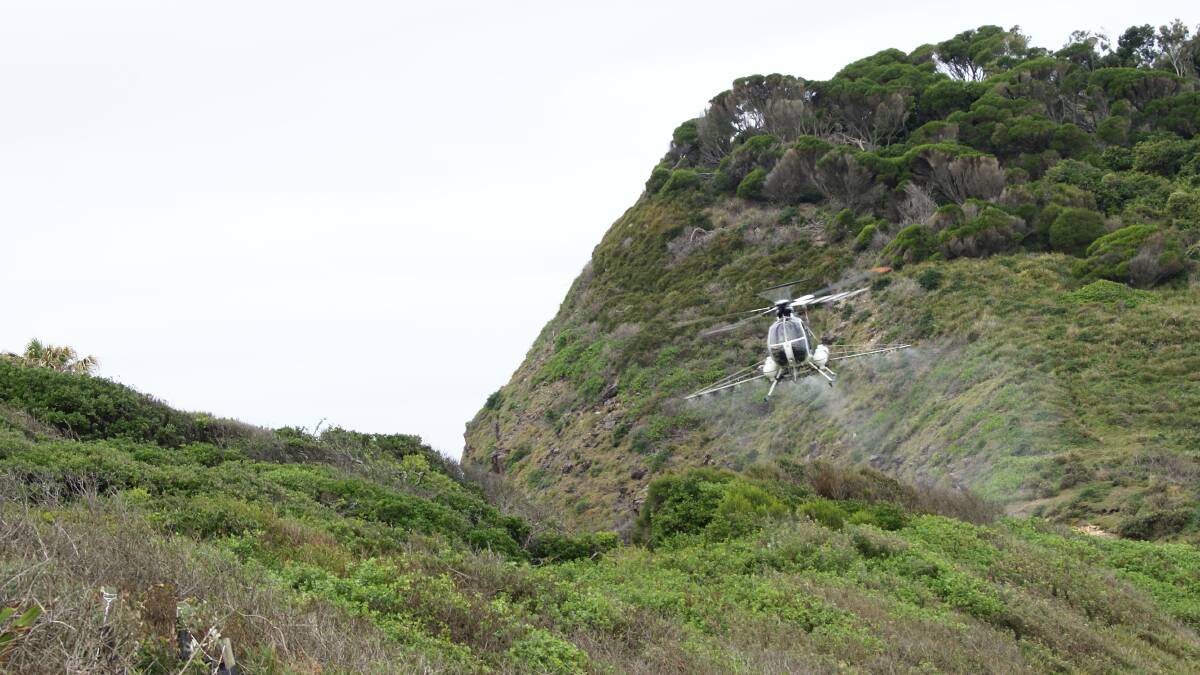
Kicking off on Monday, June 18 council will be conducting a coastal aerial spraying program to combat bitou bush, stretching from Crowdy Head Reserve in the north to Jimmy’s Beach, Hawks Nest in the south.
Subscribe now for unlimited access.
or signup to continue reading
Weather permitting, the program should be complete by Friday, June 29.
Bitou bush infests about 80 per cent of the 900km of NSW coastline and MidCoast Council actively conducts annual aerial spraying each winter to control this “weed of national significance”.
"Our coastal landscape is highly valued by residents across the Mid Coast, and protecting its natural features by eradicating weeds is a high priority for us to ensure we meet community expectations for caring for our coastal environment" council's strategic weeds biosecurity officer, Terry Inkson, said.
Sections of beaches and some adjacent camping areas, carparks and roads will be subject to short term temporary closures while the work is undertaken, with council staff on site during closures, and signage in place advising of the work.
The aerial spraying program specifically targets bitou bush, a native South African plant which was widely planted in Australia in the 1950s and 1960s to stabilise mined sand dunes.
However, in 1999 it was listed as a threatening plant species and is now a weed of national significance.
“The management of bitou bush aims to protect threatened plant species and endangered ecological communities that occur along the coastal strip,” Terry explained.
“The aerial spraying of herbicides from helicopters is essential as it allows for the treatment of steep or inaccessible sections of the coast, including remote stretches of beaches and headlands.
"The combined efforts of both council and NPWS over the past decade have seen a huge reduction of mature bitou bush in managed areas, however these ongoing treatments are necessary to control re-emerging juvenile plants.
“At Hawks Nest alone, mature bitou bush has been reduced by around 96 per cent allowing re-establishment of local native species since aerial treatments commenced in 2007.”
Council is aware of public concern with the spraying program.
"While we understand that people are always concerned about the use of chemicals in the environment, and rightly so, council does not use chemicals unless they are approved for such use by relevant authorities and do so in accordance with best practice management guidelines, to ensure maximum efficiencies and safety," Terry added.
"For general community safety, as a precautionary measure, council needs to implement buffer zones by restricting access to certain areas on beaches and in the water when this activity is occurring.
“This is why we place signage and clear the areas for the duration of the activities.”
The program is conducted following recommendations contained in the best practice guidelines for aerial spraying of bitou bush in NSW, published by the department of environment and conservation.
For more information including commonly asked questions and answers, visit www.midcoast.nsw.gov.au/aerialspraying or phone the NPWS on 6591 0300.

